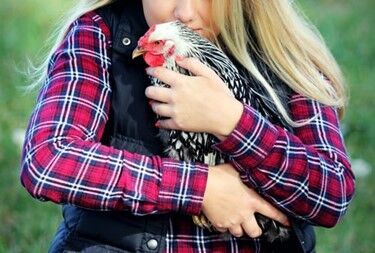The number of registered
animals is growing every day
Published: Apr 24, 2020

Although our methods of communication differ fundamentally due to the obvious species differences, over the centuries of sharing the environment with dogs, both sides have developed the ability to send and read non-verbal signals that allow mutual understanding. Knowing, skillfully interpreting, and respecting the signals sent by dogs will certainly facilitate our relationships with them, making them more enjoyable and often safer. By fully understanding our pets, we can avoid socialization errors, prevent unwanted behaviors, and respond appropriately, preventing unpleasant situations that often arise from a clear lack of understanding.
The system of signs and behaviors developed by dogs for communication and avoiding conflicts is called the CALMING SIGNALS system. Sometimes, when we are angry with our pet, it may seem that the dog is not listening to us or is deliberately resisting our commands, which is not true. Interpreting these signals as conscious defiance is a common mistake made by people. It is important to be aware that dogs use some of their signals to calm us down; however, without understanding this, we may become even more frustrated. Therefore, it is crucial to learn the ways in which our dog will try to avoid our anger and calm us down. Although this group of signals is called calming signals, it includes also threatening signals, playful invitations, and stress signals. To interpret them correctly, we must closely observe the dog.
Additionally, we should pay attention to behaviors such as: turning away, squinting eyes, licking lips, panting, lifting one paw, crouching, sitting, shaking off, submissive urination (which can also be a sign of submission and joy), rolling onto the back and exposing the belly, freezing, playing dead, pretending to sniff, panting, and whimpering.
Accurately recognizing these signals allows for early intervention, but ignoring or misinterpreting them can lead to the next stage of the dog’s behavior towards aggression, known as warning behavior. Warning signals are a set of postures aimed at frightening the opponent and represent a clear message – “back off, or I might use my teeth.” The most obvious warning signals include:
Important aspects of a dog’s body language that we should observe include movements of different parts of its body. The most well-known and obvious organ for reading a dog’s mood is, of course, its tail. Contrary to popular belief, not all tail movements are signs of joy and friendly gestures; depending on the way and intensity, they express a range of other feelings. The frequency of tail wagging, its position, and various other details are crucial in interpreting the signals sent by dogs through their tails.
Energetic tail movements indicate engagement and excitement; the more intense the movements, the greater the dog’s involvement. Conversely, the more still the tail is, the more it signifies the dog’s reluctance to engage in the situation, avoidance, or anger. Here are some basic, most readable signals that a dog sends with its tail:
Interestingly, a dog’s tail wags differently when it sees its owner (slightly more to the left) compared to when it sees another animal (more to the right) – although these differences are not visible to the naked eye.
We can also read the dog’s intentions by observing other parts of its body.
\
In a group of dogs, eye contact serves to regulate leadership issues within the pack, which also translates to interactions with humans. Eye contact between two individuals is maintained until one of them looks away and lowers their head or escalates the threat and attacks. Maintaining eye contact with a dog that is nervous, excited, or tense may provoke an attack, as it is perceived as a challenge by the animal.
However, gentle eye contact can strengthen the bond between a person and a dog.


Equally important – if not more important – are the vocalizations and scents left by the dog.
Dogs produce a range of sounds through which they express their emotions. Low tones indicate threats, anger, aggression, while high tones indicate a friendly attitude; the longer the sound, the more likely it is that the dog is using it intentionally to signal a behavior it will soon display. The speed and frequency of repeated sounds are also significant; the higher the frequency, the greater the level of arousal.
Dogs convey a range of messages through scents associated with urine and feces. Through scents, dogs communicate information about their size, character, and frequency of presence in a particular area. These signals also play a significant role in direct dog interactions; dogs sniff each other's muzzles, as well as genital and anal areas, with dominant dogs often unwilling to tolerate being sniffed by other dogs, while submissive dogs accept this ritual to present themselves to the opponent.
Dogs use body language, such as body posture, tail movements, facial expressions, and various sounds to express their emotions and needs.
Tail wagging does not always signify happiness; depending on the movement and intensity, it can indicate various emotions, including excitement, anxiety, or aggression.
Recognizing and interpreting the signals sent by a dog helps build better relationships, prevents socialization mistakes, and avoids undesirable situations resulting from a lack of understanding.



Marking animals with a microchip is the most durable, effective and completely safe method of quick and reliable identification. Every transponder (chip) has a unique number which enables instant identification of the animal and its owner, helping them reunite faster. However, it is important to remember that a chip is just a transponder with an encoded number. It is not a tracking device and contains no data about the animal or the owner! Therefore, in order to identify a chipped dog or cat, it is necessary that a microchip be registered in a national marked animal database...
Read moreIn today's world, responsibility for animal care has become not only a priority for their owners but also a societal issue. One of the most important tools in ensuring animal safety is the chip database. It allows for the quick and efficient recovery of lost pets, which is crucial for protecting their health and well-being.
The introduction of microchipping has significantly improved the effectiveness of efforts to locate lost animals, reducing stress for both owners and their four-legged friends. Registration in the chip database is increasingly required by local regulations, further highlighting the importance of this technology in ensuring comprehensive care for animals.